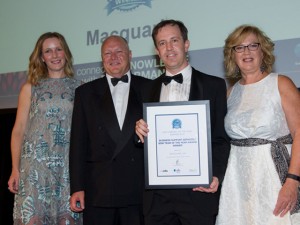In a critically-important riskinfo Round Table discussion, a cross section of industry stakeholders met to discuss all aspects of John Trowbridge’s Final Report. Jointly hosted with riskinfo by AIA Australia chief, Damien Mu, this group of adviser, licensee and life company voices was joined by special guest, FSC CEO, Sally Loane.

Damien Mu
CEO, AIA Australia, Co-host

Sally Loane
CEO, Financial Services Council

Wayne Handley
Licensee voice, Bombora Advice

Jennifer Coleman
Adviser voice, Symbion Financial Services (Charter FP)

Russell Harrison
Adviser voice, Harrisons Financial Services (Synchron)
In the wake of the release of the final Trowbridge recommendations, our panel discussed and debated the merits of the recommendations, as they impacted their own business and how they envisaged the recommendations would impact the consumer…
Adviser remuneration
While the Trowbridge recommendations are intended to be viewed in their entirety, the most controversial element has clearly been adviser remuneration, and our adviser panellists held firm positions on the implications of Mr Trowbridge’s recommendations.
Russell Harrison, a well-regarded life insurance advice specialist, who provides no financial planning advice, and charges no fee for service, outlined his view of the recommended Reform Remuneration Model of 20% flat commission and a capped $1,200 Initial Advice Payment: “Clearly, to make a loss on every single sale that I make is not a way that I could continue to run my business, and certainly not a way that any young adviser could ever come into this industry unless they were salaried by the banks or other vertically integrated institutions.”
Russell continued: “As a long-term adviser, I have renewal/trail commissions coming in and I could stay in the industry if I wanted. But my attitude is – do I really want to stay in the industry long-term if every sale I make is a loss, initially?
“And I also question the areas that haven’t been addressed in the Trowbridge recommendations, such as whether I now have to charge my clients 10% of their claim to reimburse me for the three or six or nine months it sometimes takes to get the claim paid? For some claims in particular, we are the active and essential ingredient in being able to get them paid. And that issue hasn’t been addressed.” (Russell’s point is based on the proposition that the ‘pool’ created by the combination of initial and upfront commission creates sufficient revenue to allow the advice practice to service the client at claim time.)
Russell gave several examples of the time and effort taken to secure a claim for his clients, including one that took a year and three months to get paid, and logged 135 hours of work. “The client received $2.5 million and we received $0. My business had to pay for that time.”
He told the panel that, while his business operates on an upfront commission model, he would be quite prepared to move to a hybrid model, which he sees as an acceptable method, such as 80% upfront and 20% ongoing.
Like so many other advisers, Russell also told the panel that since the implementation of the Financial Services Reform legislation from 2003 “… I have never had one consumer or client question how much commission I receive, providing they get the right advice.”
I just don’t see how risk specialist businesses can possibly sustain themselves under the proposed Trowbridge remuneration model
Queensland-based Jennifer Coleman is also a specialist risk adviser who, like Russell, does not charge fees for her advice services. Jennifer told the panel she is totally reliant on commission as her income source. She said she had spoken with her clients about any industry concerns they may have, including the nature of her remuneration, and whether they would prefer her to charge a fee for her services. “And there is always a resounding ‘no’,” said Jennifer, whenever she asks that question.
She says she has been taking hybrid commission for the past eight years. “Hybrid commission allows me the revenue to look after clients that need many hours of education and advice, along with the more sophisticated clients who do not need as much time. This allows for no fees being charged for the client whose proposal for life insurance is declined due to health issues.”

Jennifer told the panel that from five appointments she attended in the week prior to the Round Table, she found three of those five prospective clients were uninsurable. “But I still had to spend that time with them to establish their eligibility or otherwise,” she said. “That time is never taken into account when calculating what an adviser should be paid. I just don’t see how risk specialist businesses can possibly sustain themselves under the proposed Trowbridge remuneration model.”
Responding to the question of whether she envisages a time when she could charge a fee for those clients whose proposals were rejected, but for whom she invested her time and expertise, Jennifer said: “We have all (the client and the adviser) spent a lot of time getting to this point. It would be very difficult to then charge a fee on top of the frustration of not being insured.”
Churning
In addressing the spirit of aligning the interests of life companies, licensees, advisers and consumers, Russell and Jennifer were asked about those advisers who may abuse the privilege of the commission process.
Russell told the panel he believes ‘churning’ is simply not happening to the extent that the industry thinks.
because nothing was ever done, that lack of action became an encouragement to those advisers to continue their churning activity
“I believe I have never churned a policy yet. But I have changed many policies because clients have asked me to go shopping through the market, and more of that has happened since direct insurance has come into the market place.”
Jennifer noted she has always felt the life insurance companies should have been addressing churning more seriously: “… and we all knew, as advisers, who was out there churning. And nothing was ever done [by the insurers] to say ‘I don’t want your business anymore’. And because nothing was ever done, that lack of action became an encouragement to those advisers to continue their churning activity.”
Bombora Founder, Wayne Handley, had a simple and pointed message for the panel: “Without advisers, we wouldn’t have licensees.” Wayne asked each panel member whether they had ever run a business at a loss (referring to the Trowbridge principle that the adviser should receive less income at policy commencement than the cost associated with implementing it). He then asked why anyone should expect advisers and their businesses to operate under such a model.
He also asked what statistics existed that could point to the level of churning as a proportion of all retail life insurance business written. “Has anyone seen any statistical information from any life company about churning? Are there any statistics available to the public or to any open forum? We’re all talking about something we just do not know the statistics about,” he said.
FSC CEO, Sally Loane, said the ASIC Review into Retail Life Insurance Advice established a clear evidence base about the level of inappropriate advice and that it noted a high correlation between certain commission structures and the quality of advice being provided. “Now, that’s the first statistic base that was been made public, and obviously people acknowledge that there are issues with that statistic base. But it was a first step in and one that was heavily publicised,” commented Sally.
Wayne made the point that the statistics report approximately 85-90% of risk advice is paid via upfront commission.
AIA Australia CEO, Damien Mu, said the issues around interpreting some of ASIC’s statistics in its Review were illustrative of just how complex this issue is, and how complex the issues were (and are) that Mr Trowbridge was required to address.
Damien made the point that everyone supported the notion of aligning the interests of consumers, advisers, licensees and insurers. He observed there is no perfect solution and it has been demonstrated over time how difficult these issues have been to address and resolve, and that this lack of resolution has been to the detriment of the industry and to ultimately to consumers.
Has anyone seen any statistical information from any life company about churning?
He also acknowledged how difficult it is to both define and then establish churn numbers, due to the complex issues sometimes associated with replacement policy business. He acknowledged people’s circumstances do change and also the impact of the emergence of new product offers and initiatives.
Damien said Mr Trowbridge’s Reform Remuneration Model brought significant implications for the industry and that no-one was shying away from that. He warned, however, that “… the industry needs to proceed with caution because the right economic modelling and analysis needs to be done to ensure we achieve the outcomes around, not just the remuneration framework, but the structural reform that supports the intention of access for consumers to good quality advice and access to an appropriate choice of product as well”.
Damien continued: “Any industry that’s worked well relies on strong competition and market forces to drive it and sees innovation and value continuing to be at the forefront of change.
“But we must look at this as a package,” noted Damien, who emphasised the industry must consider the Trowbridge recommendations as a package of structural reform, and not consider the remuneration recommendations in isolation.
Reputation and change
Damien said many advisers felt aggrieved – not because of the perceived need for change, but rather that they have all been tarred with the same brush when it comes to consumer perception of their own credibility; “…there are many, many good advisers out there – the majority of advisers in fact.” Damien said the majority of advisers “… would welcome more scrutiny from ASIC if it meant isolating and removing advisers who deliver advice that is not in the best interests of their clients”. He also suggested it may be time for life insurance companies to report lapse rates to ASIC, or an industry body, to assist in identifying these issues.
the industry must consider the Trowbridge recommendations as a package of structural reform, and not consider the remuneration recommendations in isolation
In commenting that change is coming, Damien said it would be a shame if the industry became fractured by it. He said some ‘conspiracy theories’ could emerge in these emotional debates, but he called for unity: “We need the industry to stay together on these issues as we debate them.”
He noted that while the FSC was in a difficult position in representing all the views of its constituent members, he was confident that it would come to a resolution on the reforms needed to address the Trowbridge Report.
“We tend to focus on the negatives in our industry. But we also need to be proud of what we do, and that we play a very important role in society; not just for those families impacted by events but also the impact on broader society when you look at the economic strain on the Government for those people and families who don’t have insurance,” he said.
Expressing his personal point of view, Damien commented: “Do I believe that you can have a remuneration model that doesn’t have cost recovery in it? No I don’t. If we have a remuneration model that doesn’t support the sustainability of advice and the practicality of the work advisers do, first and foremost, and then an independent advice model, then that is not healthy and does not achieve the desired outcome of serving consumers.”
But Damien cautioned that the answer to remuneration was also very complex: “From my perspective, the modelling has to be done to look at what is a remuneration framework that works. John [Trowbridge] has put a stake in the ground, and from where the industry currently stands, it would be a significant shift … and we need to achieve consensus amongst the industry to move to a model that is sustainable.”
I think the industry has allowed itself to stay complex for a long time and I think that’s at the heart of where the lack of [consumer] trust lies
Having listened to the adviser, licensee and life company views, Sally said she came into her role at the FSC both as a consumer of life insurance advice and also as a person who, through her previous industry roles, understands the consumer very well. Looking from the outside in, Sally said it always struck her about how life insurance was so difficult to obtain and why there has been resistance to change, “… and I think it goes to the heart of the issue of complexity. I think the industry has allowed itself to stay complex for a long time and I think that’s at the heart of where the lack of [consumer] trust lies.”
Sally spoke about the positive change that can come from ‘disruptors’, citing the initiatives taken by new South African insurer, BrightRock, which has helped to re-shape industry language, as one part of totally revamping both its approach to life insurance services and how consumers view it.
“We want more Australians to be insured, both for their own sake and for the good of the economy. If we are underinsured as a nation, then the cost goes back to the tax-payer and that’s not good for anybody,” she said.
Sally agreed with Damien in noting the future of the sector is in the industry’s hands: “…we have to guide this, or it will be fixed for us.” Sally also reinforced Damien’s analogy about the Trowbridge recommendations being very much ‘a stake in the ground’. She reiterated the independence and integrity of the process into which she became involved, following her appointment to the CEO role, and also noted the dedicated approach taken by Mr Trowbridge and the many hundreds of hours he devoted to considering all points of view.
Sally observed that responses to Mr Trowbridge’s recommendations by stakeholders included criticism from some consumer groups that his recommendations had not gone far enough, while others, including the majority of the adviser community, believed he had gone too far.
responses to Mr Trowbridge’s recommendations by stakeholders included criticism from some consumer groups that his recommendations had not gone far enough
“It’s up to the industry now, to debate in a mature way, and in a way that doesn’t reflect self-interest, but rather consider the greater good. That is, to get more people insured, with better quality advice, with access to better products.”
Modelling the outcomes
“We’re now going through a process within the FSC,” continued Sally, “…receiving feedback on Trowbridge from our members.” She said she was aware of advisers who have conducted their own modelling on the Trowbridge Reform Remuneration Model, and was confident insurers and licensees are at various stages in constructing their own due diligence and modelling.
Damien noted: “It would be fantastic to get consensus within the industry to achieve changes that are meaningful, and support what we’re trying to achieve, and we’re confident this will happen, but each organisation needs to take responsibility for its own view and develop its own analysis and basis for the decisions it makes. But I think modelling must occur; otherwise we won’t have an answer to Wayne’s question about how any numbers are justified. Pulling numbers is great, but unless we have the opportunity to anchor them to any meaningful analysis, it makes it very difficult to put a recommended framework to the market.”

Sally also reminded the panel that life insurance remuneration was mostly omitted from the Future of Financial Advice reform process; this having given the life insurance industry additional time to consider its position from a self-regulatory stand-point.
She also noted the issue of churn was brought onto the agenda during the course of the FoFA reform debate, and Government Ministers at the time were very interested in the industry developing a self-regulatory response, which was ultimately unsuccessful.
I’ve never seen anything as divisive as this in my entire career
Sally agreed with Damien’s position and also urged the industry to come together very quickly if it intended to approach the Government with a united response, as she believes the Government will act on life industry issues at some point after the 2015 Federal Budget has been handed down in mid-May.
Wayne agreed with previous comments made by both Sally and Damien that Mr Trowbridge “… has given us base zero to work from”. He believes this is a positive step because the Trowbridge recommendations “…can anchor the start of the debate; not the finish of the argument”. But in a telling comment about the significance of this moment in Australia’s life insurance industry, Wayne, who has worked within the financial services and life insurance industry since he left school, said: “…I’ve never seen anything as divisive as this in my entire career… The response to this issue is unprecedented in my time in the life insurance industry.”.
“Sally is so right in saying that our terminologies, our phrases and our references have no basis [for consumer understanding],” continued Wayne. “There is no common ground; there is no common language. It [the life insurance conversation with consumers] looks like artful deceit. And that is a shame.”
On the extent of churning as an issue, Wayne told the panel he is still asking for statistics. He said ‘churn’ can well-and-truly be fixed by that part of the Trowbridge recommendations which say there should be no additional brokerage if the policy is replaced in the first five years.
Wayne referred to statistics Bombora had undertaken on modelling for small, medium and large risk-focused businesses which may be currently operating on a 50% upfront commission and 50% hybrid structure. The Bombora modelling demonstrated how a 30% flat commission scenario would impact those businesses. Wayne told the panel the modelling revealed the differences in year one income were 45%, 86% and 107% respectively. “I dread to think what those numbers would be for a 20% flat commission model,” he said.
The real problems
“Remuneration is what is focusing the energy of the market,” continued Wayne. But the real problems, he believes, rest in areas such as adviser training and education. He observed there is no recognition across the entire industry that a risk specialist’s skills and capabilities are different. Wayne gave the example of the significant differences in a client’s life insurance advice experience when dealing with a financial planning firm, that may write twenty policies in a year, compared with that same client experiencing the services of a specialist risk adviser and firm who are dedicated to all the life insurance needs of the client, and their family and their business, including ‘when the rubber hits the road’ at claim time.
there is no recognition across the entire industry that a risk specialist’s skills and capabilities are different
Wayne also lamented what he sees as the relative lack of risk-focused training at licensee Professional Development days. He said typical PD days in licensee land may see ‘risk’ issues allocated around 10% of the day’s agenda. He also referenced the lack of IT ‘spend’ on the life insurance proposition by insurers, compared with the amount spent on financial planners and broader advice platforms.
The value of risk advice
Sally raised the principle that ‘if you don’t pay for something, you don’t value it’. On that premise, she challenged Wayne and other members of the panel to consider applying that notion to the possibility of risk specialists charging a fee for their specialist advice.
In considering this question, Wayne referred to statistics collated by Bombora revealing what proportion of referrals they received from accounting firms did not earn a fee. From the many hundreds of engagements, Wayne told the panel that 59% of the adviser’s work was unpaid because clients couldn’t or didn’t proceed with life insurance due to health or lifestyle reasons, or because no cover or less cover was deemed to reflect the client’s best interests. “None of it [performed by a risk only practice] was rewarded work,” said Wayne. He said the debate was ‘Would you pay for no outcome?’ That is, would a consumer pay a risk specialist or any other adviser for their advice services if they were not able to access life insurance at the end of the process? Wayne’s position, reflecting Jennifer’s earlier comment, was that the consumer would not pay.
Cash flow is king?
The panel referred back to an earlier conversation about the fall-away of remuneration for an adviser who transitioned from either an upfront or hybrid model to level commission.
Damien noted: “…we all acknowledge there’s a cost to advice. People acknowledge that advice is important and that there’s a cost to it. But while it’s easy to see that 30% over a period of time will eventually lead to higher overall fees, the cost is incurred way before those six years have elapsed and must be paid. So we’ve got to understand the environment we’re working in; not a discrete case.”
It was suggested that many advice businesses may already have a cash flow that could fund the initial costs. But Damien queried whether this was the case, particularly given the vast majority of small business must regularly deal with expenses and overheads within the reality of their day-to-day operations.
Damien said people are not challenging that change is required, but urged that any change should be ‘reasonable’ and undertaken within the context of the broader life insurance environment, and in a way that will avoid any unintended consequences possibly associated with that change.
The risk adviser has been the poor relation of the financial services sector for the last 25 years
Russell commented that Wayne’s statistics are proof of what’s actually going on in the industry. “We’re all accepting that change is needed, but none of us want change where we’re running a loss leader business, and this is exactly what Mr Trowbridge’s recommendations advocate. None of us can afford to do that; even those of us who have been in the industry for 20 years,” Russell said.
Referring back to Damien, Jennifer said she had just committed to another five years for her business. “But you get so emotional about what people say you’re allowed to earn, and that your business can handle that – and what you lose is your love of the business,” she said.
“I’ve just signed up for another five years. We do get emotional and we get so tied up with the issue of remuneration we lose sight of what is the real issue here.”
Jennifer said she was completing a financial planning diploma course she has been required to undertake. “But this is not what I do. Where is the education and support for what I do? That is a sadness and lack of respect from the financial services industry for the specialty of risk writing.”
Wayne agreed. He said the learning and educational qualifications, as specialist risk advice differentiators, are already there, but not focused on or packaged properly. “It should be the same as a financial planner being able to work with derivatives, only if they have completed special training courses,” he said.
“Every consumer has the right to know if they’re dealing with a professional,” continued Wayne. “The risk adviser has been the poor relation of the financial services sector for the last 25 years. They have had to fend for themselves. They are the forgotten warriors of the sector.
“We know who the churners are and we can act on that. But you don’t destroy the whole herd because of a few bad members of the flock. You must find another way to address the issue,” said Wayne.
Jennifer supported Wayne’s point and agreed that the proposed remuneration model will not work.
Damien also agreed the economics and cash flow also need to work for the licensee, including the accommodation of costs associated with adviser training and other services for both advisers and clients.
The broader Trowbridge recommendations
Sally said she views the overall Trowbridge package as a powerful set of recommendations that would help to regain trust from consumers in the advice sector.
She continued, “The Code of Practice is a great initiative and has been widely accepted.” She reflected that, during her early years growing up in a country town, the local life insurance agent was one of the most trusted people in the town. “What has happened to that?” asked Sally.
Sally also noted the Code of Practice would be a very effective mechanism which can also be used to set standards and best practice in areas such as underwriting and claims – areas within the life insurance advice process where advisers can often bear a lot of the costs. “… so if you can get improvements in insurer practices in those areas – benchmarks and consistency, through a Code of Practice, then that will have flow-on effects to reducing the costs of providing advice and helping advisers.”
Damien and Sally clarified for the other members of the panel that the FSC’s Life Board and Advice Board will be meeting to formulate their approach and actions with regard to the Trowbridge best practice recommendations.
Damien emphasised the need to be collaborative as a group through this coming process. In referring to groups such as the FSC’s Advice Board, which represents licensees, and the AFA, Damien urged that “… we need to continue to work through this together, because if groups deal with Trowbridge in isolation, it’s not going to work”.
Who will bear the costs?
“But going back to remuneration,” said Damien, “…if we don’t get that part right, we won’t have to worry about a Code of Practice because we won’t have an industry, which is what Wayne was alluding to. So, how do we ensure that we deliver on the intent [of Trowbridge]? And the two issues that come to mind initially for me are:
- Remuneration
- Practicality of both the ‘per client’ and the five year replacement rule
“The intent of those is sound, but whatever we put forward has to be practical in both implementation and in reality. In terms of practicality, if the new system costs hundreds of millions to implement, we have to ask who will bear that cost. So, how do we go back to the intent of the recommendations, using other levers at our disposal? We have to look at practicalities; not just around cost but also privacy and process, efficiency and productivity. Whatever we deliver has to be practical and must not have an unintended consequence of further cost burdens ultimately borne by the consumer.”
Future product options
Russell raised the issue of the escalating costs associated with stepped premiums: “In the UK there’s a greater push for advisers to deliver level premium solutions. In Australia, if a lot more level premium business is sold, could this lead to a reduction in the cost of level premium business? This would also address the churn issue.”

Jennifer agreed. But she said the current structure of level premium products was not good because very few of them were guaranteed not to increase, for example, by way of indexation. She added that “… if advisers were trained in a better manner they would do a better job in delivering solutions and the consumer would have a better idea of what they’ve got.”
Damien agreed, in that the reason there is such a high lapse rate is partly because of product structures. He floated the concept of considering the introduction of more guaranteed level premium products that are better suited to giving consumers options around policy durations of five or ten years, and having these contracts exist in a stand-alone product style.
Jennifer supported this idea, commenting that she can envisage a whole suite of level premium products “…level for your whole life, complemented by other products for specific periods for specific purposes, like mortgages and children’s education”.
Russell commented that around 80% of the business he has written since 1994 has been on a level premium structure and he has received no complaints from his clients. “Level premium products will work, but they need to be restructured,” he cautioned.
Wayne said the industry was still using wrong or out-dated terminologies. “We’re still saying ‘policies’ not ‘programs’…and what Russell and Jennifer are referring to is an insurance program for life. That’s where we need to get to. And this gets back to language and our behaviour. There are so many good things we can do here if we channel our energies the right way.”
Sally agreed with Wayne, but added, “It’s also about finding out what the clients and consumers actually need.”
Continuing the conversation about new product development, and again referring to the South African firm, BrightRock, Damien said we’re talking about an environment where the left hand and the right hand need each other – where advisers and insurers need to work together. “We can innovate with product, but if we don’t have advice partners who will take that product forward it will sit on the shelf and it will simply become one of those ‘It was a nice idea at the time’ initiatives that goes nowhere.’ So this is where we do need to work in partnership with licensees and advisers, and I’m confident this will happen,” he said.
Minimum APL requirements
There was little dissent or discussion regarding the call to increase to at least 50% the minimum number of retail life insurers on any dealer group Approved Product List (APL).
Wayne noted Bombora already has open APL architecture, but he also said he had a fundamental belief that product doesn’t make any difference to the actual advice. “Advice is advice,” said Wayne, noting the consumer must simply be made aware of the product selection process, once the advice recommendations have been agreed. “It’s ok if you only have one set of products, as long as the client knows you only have one set. I don’t think that makes any difference to the quality of advice.”
it’s not about the dollars; it’s about the perception of who we are
In re-stating the intent of Mr Trowbridge’s APL recommendation, Damien said that it’s important for consumers to have choice and that there should be a level playing field, “…especially if you draw a line through what is in the best interests of the customer”.
Jennifer told the panel that about 80% of her clients’ needs are very similar. She said “…the insurance product is just a ‘plug’, where we identify the holes and we place the safety nets under those holes, depending on the extent of the client’s cash flow”. For most of her clients, Jennifer said the product doesn’t matter. “Most of the time, four or five of the top insurance companies can provide me with the right plugs. But occasionally, when I need the right product, such as a specific business insurance need, there’s only one company that will do this for me.”
Jennifer also noted how difficult it is for her to have a non-approved product signed-off for her to use, while Wayne said it shouldn’t be that hard. Sally agreed this was an unnecessary barrier to competition, which all agreed shouldn’t exist.
Russell said his licensee, Synchron, offers every company on its APL, but his own firm runs comparisons on six companies, which can change over time, particularly based on the quality of claims services.
The future
In closing, Sally strongly supported the credibility of the Trowbridge process and the independence of its Chair, John Trowbridge. She made the point that a genuine consensus view could have taken a very long time to be agreed, and that this consensus may never have emerged.
I’d like to think that the specialist risk adviser is rather singled out in the pursuit of the final outcomes because they’re the ones who will be affected the most
Wayne agreed that this is the beginning of the debate, characterising the Trowbridge recommendations as having given the industry a base camp from which to work – to have informed, meaningful and constructive dialogue. He also voiced his sense of the personal hurt suffered by the majority of advisers, who feel their dedicated endeavours have been brought into question.
Jennifer remarked that she was pleased Wayne raised the point about how much this debate and its implications had hurt so many advisers. “There has been so much passion. But it’s not about the dollars; it’s about the perception of who we are,” said Jennifer, who added she was aware of a lot of advisers contemplating their future at the moment, and who are thinking of moving away from the industry to something entirely different.
Damien said it would be ideal if the industry can achieve a self-regulated outcome, having struggled to do so in the past. “John Trowbridge is a very credible individual and was very collaborative in widely consulting with stakeholders. I’m hopeful we now have a platform from which we can drive to meaningful change that gets back to supporting a sustainable and quality advice industry for all Australians.”
Russell agreed the Trowbridge Report is an extremely good start, “…but I think we’ve got a long way to go. I’d like to think that the specialist risk adviser is rather singled out in the pursuit of the final outcomes because they’re the ones who will be affected the most. And they in turn will impact the insurers the greatest. I would like to see sanity reign and see if we can get together, as an industry, to self-regulate. Otherwise I see a disaster in all sorts of areas including the cost of the Government’s welfare bill blowing out if this isn’t resolved.”
Sally reiterated why having great life insurance outcomes for consumers is best for the Australian economy, emphasising that in the world these days, the consumer really does come first.



















